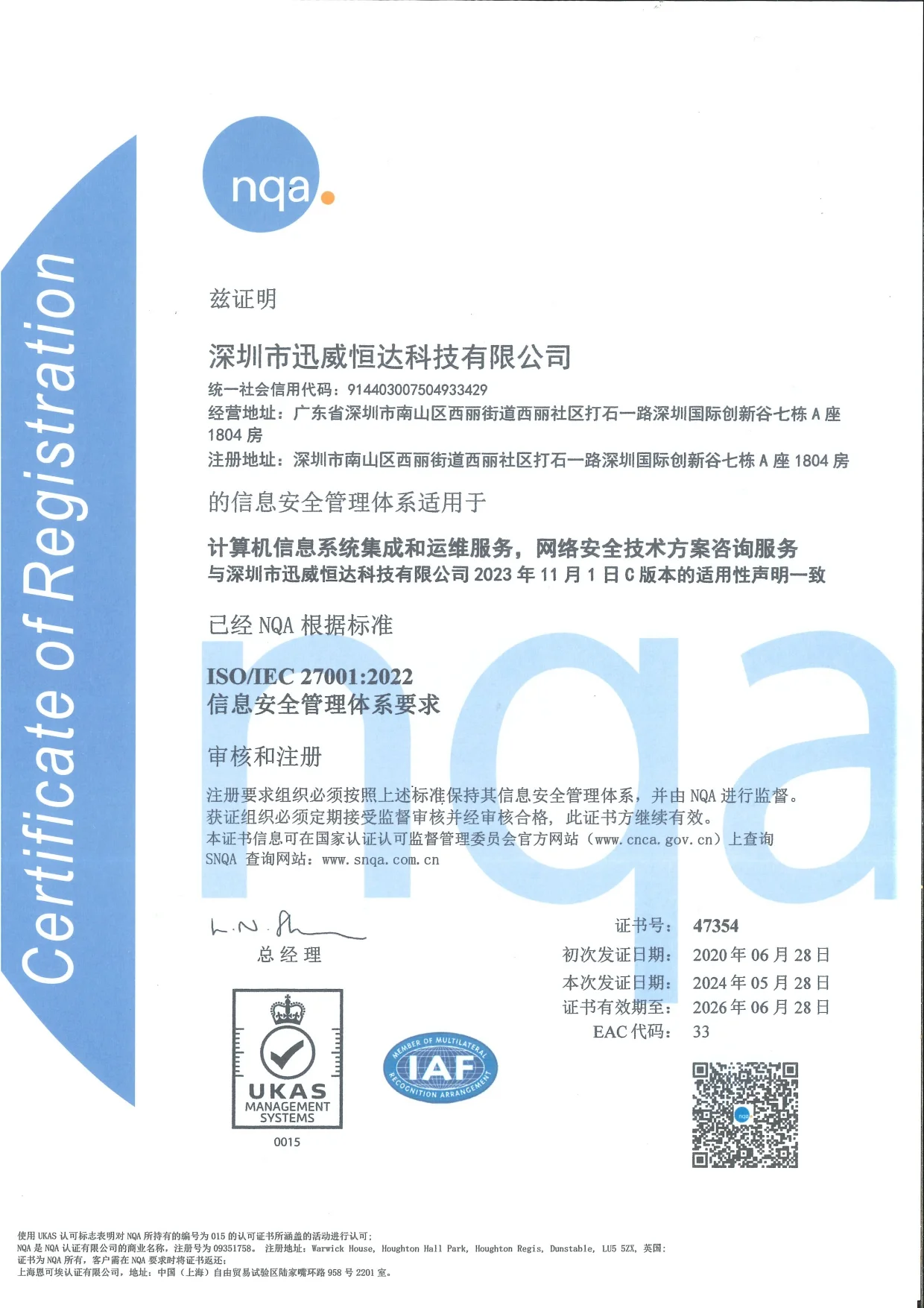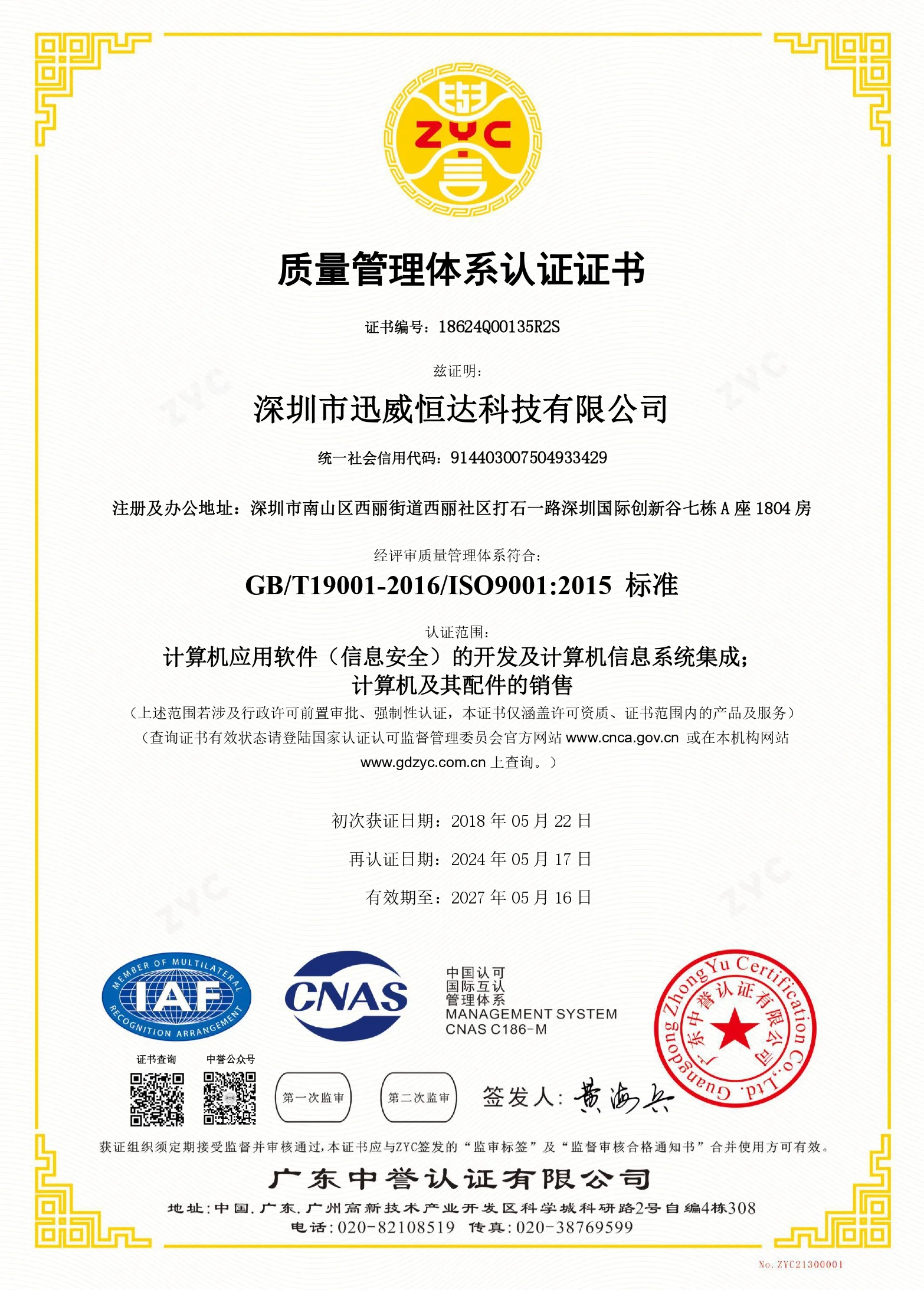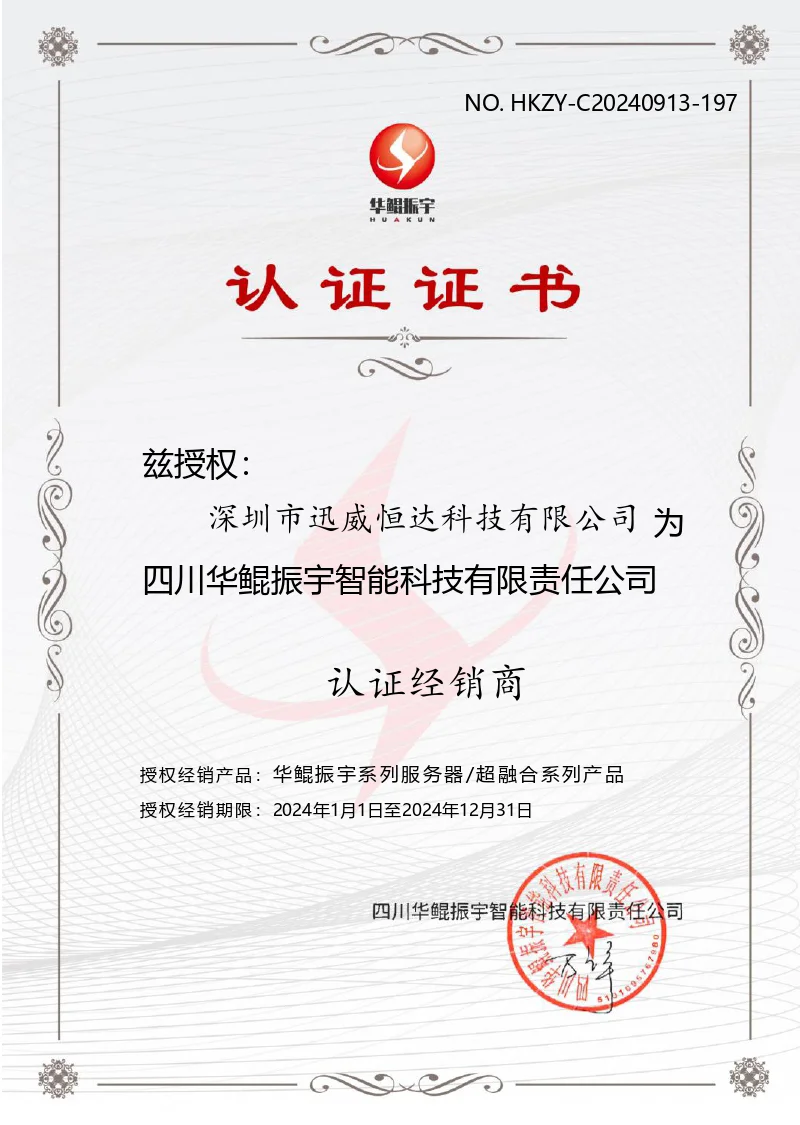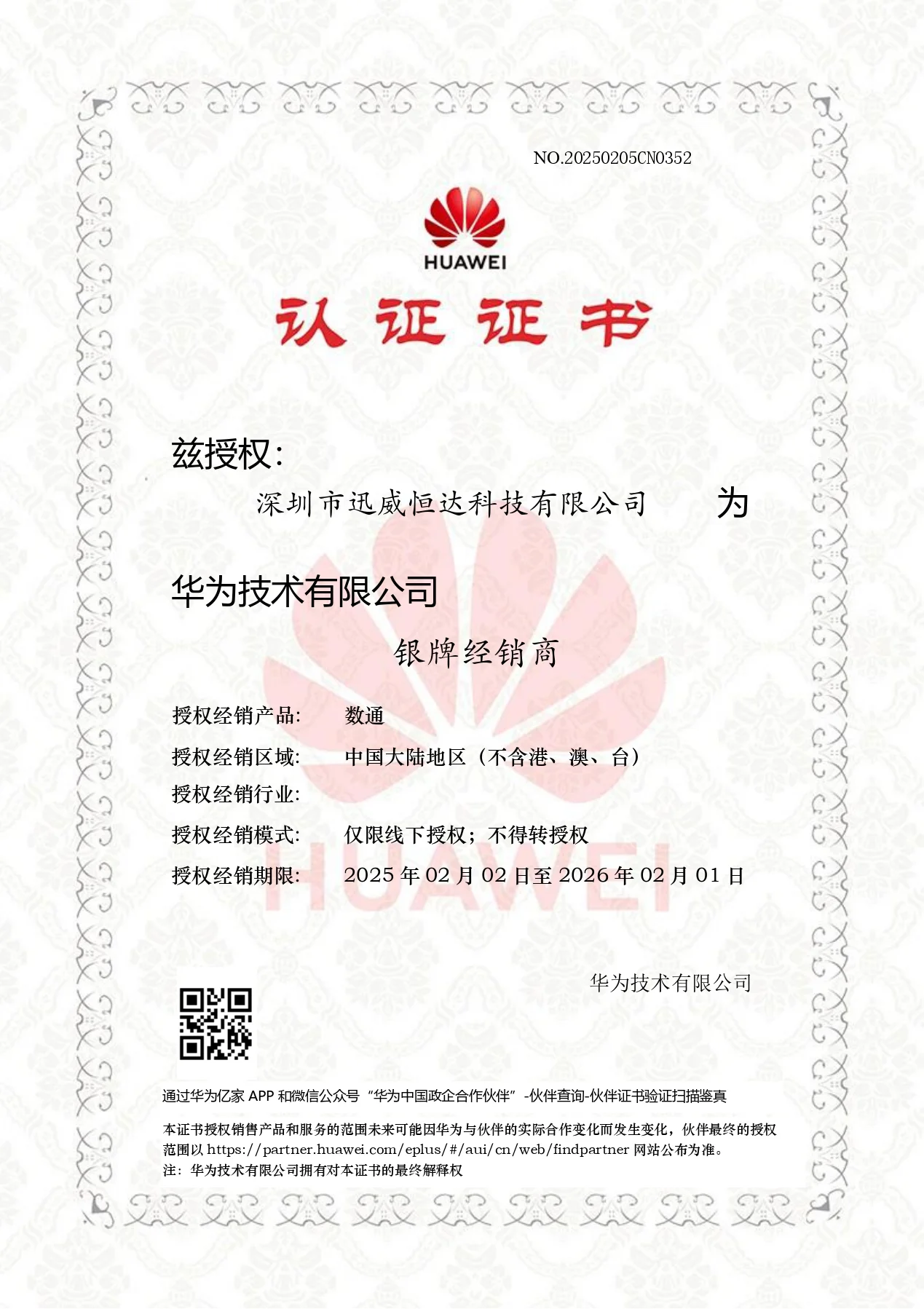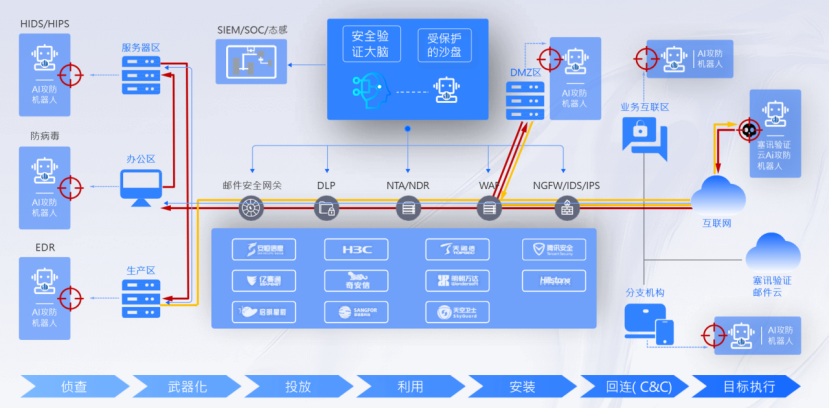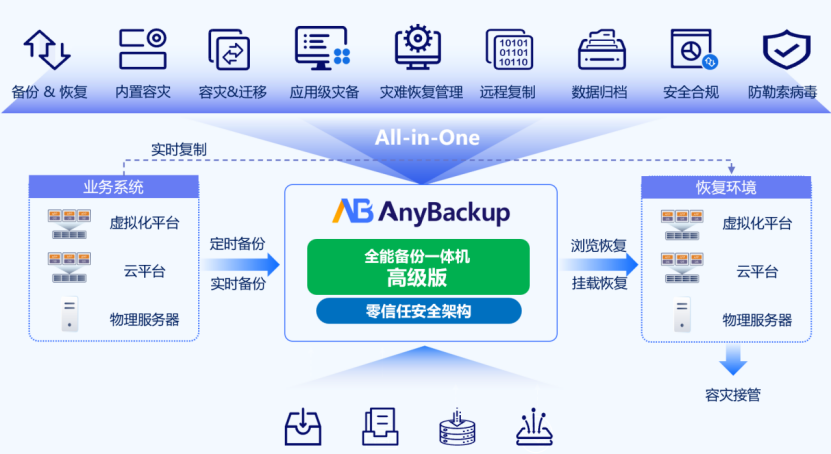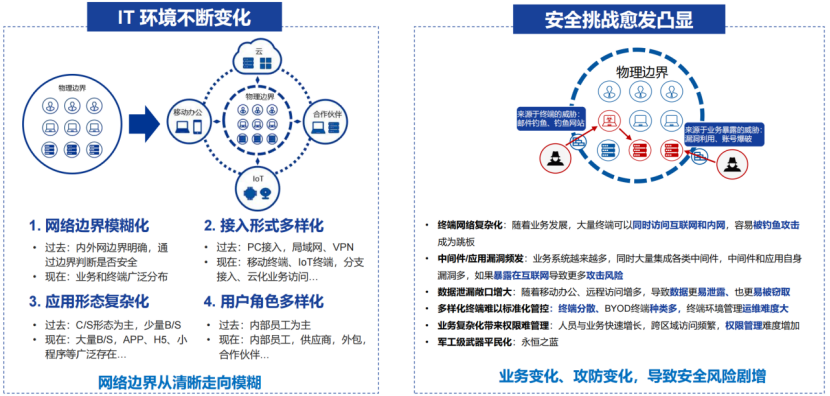VMware VCF9.0 Storage Services VSAN
In today's rapidly evolving IT landscape, enterprises face the convergence of multiple trends that are reshaping their understanding of infrastructure (especially storage). VCF 9.0 brings significant improvements to VMware vSAN, aligning with these trends and helping enterprises meet modern storage needs with efficiency, high performance, and high elasticity.
Category:
Keywords:
Tel
Product Details
In today's rapidly evolving IT landscape, enterprises face the convergence of multiple trends that are reshaping their understanding of infrastructure (especially storage). VCF 9.0 brings significant improvements to VMware vSAN, aligning with these trends and helping enterprises meet modern storage needs with efficiency, high performance, and high elasticity.
Industry trends and customer challenges
Enterprises are undergoing drastic changes in the data center and market environment, and many challenges can not be addressed by the existing architecture. Therefore, digital transformation has become a top priority.
The first significant trend is the continuous growth of data. Long regarded as "digital gold," data provides organizations with insights, new products, and services to build competitive advantages. Currently, the fastest-growing type of data in data centers is unstructured data, while overall data volume continues to surge rapidly. How to store and retain this data at reasonable costs has become a core focus for IT departments. Therefore, IT teams urgently need storage efficiency-enhancing technologies like deduplication (Deduplication) and compression to control Total Cost of Ownership (TCO). Simultaneously, they require storage systems with high capacity and low latency that deliver outstanding performance while maintaining cost-effectiveness to meet application demands for data access.
As data volumes continue to grow, organizations are transforming their data access strategies. To capitalize on emerging revenue streams, businesses are accelerating the adoption of new storage interfaces like object storage and high-performance file storage (HDFS) as primary access points for AI workloads. These evolving systems demand enhanced data management capabilities, particularly in boosting model accuracy and reducing latency. While current IT departments still employ fragmented solutions for diverse data types, there is a growing preference for unified storage platforms that streamline operations and boost efficiency.
Beyond the challenges posed by data growth and emerging storage interfaces, the widespread adoption of hybrid cloud strategies has further exacerbated infrastructure sprawl. According to a recent Broadcom study, 92% of organizations are operating in hybrid environments combining private and public clouds, meaning data and workloads are distributed across on-premises data centers, edge locations, and public clouds. However, this sprawl trend has led to fragmented architectures that rely heavily on single solutions, making unified management increasingly difficult in large-scale environments. To reduce complexity, IT urgently needs a storage infrastructure and operational approach that maintains consistency across all environments.
Which workloads are driving data growth and driving the need for new interfaces in multiple environments? The answer: artificial intelligence (AI)!
AI workloads are driving revolutionary demands on storage infrastructure. Both established predictive AI systems and rapidly emerging generative AI models require rapid, reliable access to massive data volumes. While storage requirements vary across different AI domains—particularly the recently prominent Retrieval Augmented Generation (RAG) workload—which far exceeds the performance limits of traditional hard disk drive (HDD) storage systems—current AI operations still rely heavily on legacy architectures. These systems increasingly struggle to meet high-performance, low-latency demands. Furthermore, AI environments demand that GPUs bypass CPU bottlenecks to directly access storage systems at high speeds, significantly reducing data processing latency. This presents unprecedented challenges for the performance, connectivity, and concurrent access capabilities of underlying storage architectures.
While many applications still run on virtual machines, container adoption continues to grow, particularly in the AI workload domain. Although containers are ephemeral by nature, their storage must be persistent and decoupled from container lifecycles. As containers scale at large, storage management requires granular precision down to individual Container Volumes (CVs). Storage systems must also integrate deeply with container orchestration platforms like Kubernetes to enable rapid application development and deployment. This creates an urgent need for software-defined storage that scales with container expansion rates while maintaining the same management tools and granularity as virtual machines. Meanwhile, developers require seamless access to underlying infrastructure through their daily tools to accelerate product delivery cycles.
Finally, cyber resilience remains a key focus for enterprises. Ransomware continues to pose a significant threat —— In 2023, two-thirds of organizations experienced attacks, with over 75% of incidents involving data encryption. Cybersecurity has been widely recognized as one of the most critical challenges facing CIOs.
Our vision for the future and current solutions
VMware's storage vision within VMware Cloud Foundation is to deliver comprehensive and unified storage capabilities across software-defined private cloud architectures, covering on-premises data centers, edge locations, public clouds, and sovereign cloud environments. Our strategy focuses on building a unified, multi-purpose storage platform that supports both primary and secondary storage scenarios, catering to various workloads and data formats. The platform's design objectives include: streamlining operational processes, enhancing security, reducing overall costs, and accelerating enterprise technological innovation.
Reduce storage costs
We are proactively addressing customers' cost concerns through a distinctive approach. The VMware Cloud Foundation licensing model provides each compute core with 1 TiB of vSAN storage capacity, which has helped customers achieve an average 30% reduction in storage costs. Some clients report Total Cost of Ownership (TCO) decreases exceeding 40%, demonstrating significant advantages over traditional controller-based storage arrays.
By supporting certified general-purpose commercial servers, we have further reduced costs. Currently, over 500 vSAN ReadyNode nodes from 15 OEMs and manufacturers are available, achieving a 46% reduction in average cost per TiB of storage. Our on-demand horizontal scaling hyper-converged architecture eliminates resource waste caused by over-provisioning in traditional vertical scaling systems, while the standard server-based architecture significantly lowers support and operational costs. Ultimately, customers can obtain high-performance, highly reliable storage systems tailored for mission-critical workloads without bearing the steep price tag of traditional arrays.
In VCF 9.0, we introduced software-based global deduplication (GDD) functionality to further help customers reduce storage capacity overhead. In certain scenarios, this can decrease storage requirements by up to 8 times, which is particularly crucial in environments with continuously growing data volumes. The deduplication mechanism in the new vSAN version is specifically designed for low CPU overhead and applies to all data within the cluster. Utilizing a post-processing deduplication approach, it automatically operates during system idle periods with minimal impact on business operations. Unlike traditional storage systems that only perform deduplication within the storage range behind a pair of I/O controllers, vSAN's deduplication domain scales linearly with cluster size, thereby achieving higher storage efficiency.
In the future, we will continue to explore the possibility of further reducing unit storage costs through high-density storage media that not only meet rigorous performance and latency requirements, but also unlock more usage scenarios (such as secondary storage in backup scenarios) with our differentiated licensing model to create greater value for customers.
Provides low-latency storage for AI workloads
AI workloads demand more from infrastructure, and vSAN effectively addresses this challenge through its next-generation Express Storage Architecture (ESA). Each vSAN ESA node delivers up to 300,000 IOPS performance, maintaining sub-millisecond low latency even during peak periods. Unlike traditional storage systems that only expand capacity without improving performance, vSAN ESA enhances both performance and capacity simultaneously during cluster expansion. Additionally, vSAN handles node failures with greater sophistication. Recent tests showed vSAN achieves 60% lower latency than traditional storage during failures, further validating its stability and reliability in mission-critical environments.
In version 9.0, we implemented network traffic separation technology to isolate the communication between computing and storage resources, achieving up to 25% performance improvement for vSAN storage clusters. This feature not only frees up storage network bandwidth but also allows customers to better leverage their existing network investments. For organizations requiring network segmentation, this means they can choose lower-bandwidth, cost-effective networks for computing resources without needing to deploy high-cost, high-bandwidth architectures for both computing and storage.
Moving forward, we plan to extend vSAN's low-latency advantages to more secondary storage scenarios, positioning it as the ideal storage platform for predictive and generative AI workloads. Through its high-capacity, low-latency, and horizontally scalable architecture, vSAN will deliver precisely tailored storage support for these data-intensive and performance-sensitive applications.
Provide software-defined storage for all workloads
VMware vSAN provides a flexible software-defined horizontal scaling architecture that enables enterprises to optimize and scale their storage resources on demand. Customers can either scale linearly or adopt a split architecture for on-demand, small-scale deployments that can eventually scale up to PB-level scales.
Driven by the CSI protocol, VMware vSAN enables persistent volumes essential for container workloads, allowing developers to continue accessing VMware infrastructure through familiar tools. Administrators can implement granular visibility and control over container volumes while maintaining unified management of persistent storage as a critical data storage solution. With deep integration between vSAN and the CSI driver, container deployments can achieve rapid and large-scale deployment through Storage Policy-Based Management (SPBM), effectively meeting the demands of fast-paced container iteration cycles.
In VCF 9.0, VCF Automation provides a convenient way to deliver unified volume services for multiple tenants. Whether it's the storage needs of traditional VMs or the persistent volume requirements of containers in VMware Kubernetes Services (VKS), all can be effectively met on the same platform.
In the future, we will further strengthen multi-tenant support and "Infrastructure as a Service (IaaS)" capabilities to provide development teams with rapid access to resources while ensuring that enterprises maintain full governance and control over resource management, security and compliance.
Implement a consistent storage operation and maintenance model in local, edge, and public/sovereign cloud environments
To support consistent operations, VCF delivers a unified software-defined infrastructure across all VMware environments. This significantly simplifies deployment and management processes in data centers, edge environments, and public cloud setups. VMware collaborates with extensive public cloud partners through unique partnerships—— covering all major hyperscale cloud providers and hundreds of regional cloud service providers—— to deliver a unified experience for customers in their private cloud environments, including storage management.
VCF 9.0 introduces several groundbreaking innovations in storage operations and maintenance. Customers can now extend all operational benefits of VCF—including automated deployment, scaling, and updates—to all vSAN-based infrastructure environments. With multi-site functionality, VCF significantly reduces monitoring and troubleshooting time while providing a unified console for centralized management of all VCF storage resources (including vSAN, VMFS, and NFS). The integrated console not only delivers cross-site health alerts but also incorporates built-in health monitoring mechanisms and provides guided repair steps to help users quickly identify and resolve issues.
In the near future, our hyperscale cloud partners will progressively integrate vSAN ESA into their VMware services. Multiple cloud platforms including AWS' VMware Cloud Foundation, Google Cloud VMware Engine, and Azure VMware Solutions will all adopt the architecture-supported VCF solution to support ESA.
To align with this strategic direction, starting from VVF/VCF 9.0, the virtual volume (vVols) feature will be phased out and completely discontinued in subsequent VVF/VCF 9.x releases. As most public and sovereign cloud providers have not adopted or offer vVols, they cannot achieve a consistent operations model across on-premises, edge, and cloud environments. Throughout their lifecycle, vVols have maintained low adoption rates, being utilized by only a small percentage of vSphere customers (in single-digit percentages). For more details, please refer to the relevant knowledge base articles. Moving forward, we will continue to provide flexible external storage options through support for VMFS and NFS-based data storage solutions, catering to diverse business needs.
Build native security and network resilience for private clouds
Safety and resilience form the core design philosophy of vSAN, which also addresses fundamental requirements for VCF customers. Since vSAN 8.0, we have introduced next-generation snapshot functionality. In vSAN 8 Update 3, we further enhanced vSAN Data Protection, enabling VCF administrators to easily handle data loss caused by malicious activities such as accidental VM deletion or ransomware attacks. Through flexible configuration of Protection Groups, users can explicitly define which virtual machines require protection, along with setting protection frequency and retention periods, simplifying operations while delivering robust safeguards. The platform also supports immutable snapshots and provides static and transport encryption certified by FIPS 140-3, ensuring secure data protection across all operational states.
In VCF 9.0, we introduced a new feature based on vSAN data protection: vSAN-to-vSAN replication. This technology enables asynchronous replication of vSAN snapshots to any vSAN ESA storage pool, whether in hyper-converged infrastructure (HCI) or decoupled architectures. As a high-performance, cost-effective solution, vSAN replication significantly outperforms traditional array-based replication in simplifying recovery procedures and reducing downtime. Unlike conventional storage systems that rely on LUN-level replication, vSAN replication achieves fine-grained replication and restoration at the virtual machine level. This approach not only reduces storage demands at remote sites but also alleviates network bandwidth pressure. Recovery, failover, and rollback processes are also simplified, eliminating the need for batch operations at the LUN level.
To further unlock the platform's potential, vSAN Replication integrates with VMware Live Recovery, enabling network security recovery and disaster recovery in VCF environments. In VCF 9.0, Virtual Library Replicators (VLR) allow data restoration to locally isolated resource pools, creating critical network recovery topologies. This is particularly advantageous for customers unable to store data in public clouds due to data sovereignty, privacy concerns, or regional regulatory requirements. The deep integration of vSAN Replication with VLR also provides extensive historical snapshot versions, addressing the need for "non-infected data version" traceability in network recovery scenarios. Given that recent recovery points are often maliciously encrypted, IT teams require precise rollback mechanisms to locate unaffected snapshot copies. Furthermore, both network security recovery and automated disaster recovery can be centrally managed through a single VLR device, simplifying operations while leveraging vSAN storage clusters to achieve flexible expansion of recovery infrastructure.
Our mission is to empower clients with a closed-loop cybersecurity strategy spanning prevention, detection, and recovery. To realize this vision, we are launching Intelligent Threat Detection (ITD) – an AI/ML-powered solution that integrates proactive encryption protection mechanisms. By analyzing data from multiple recovery points and metadata parameters, ITD enables early detection and minimizes the Blast Radius of attacks.
Create a unified storage platform for all data types
For years, customers have sought a unified storage platform that can accommodate all workloads without requiring separate purchases for specific scenarios. In today's environment, deploying block storage, file storage, and object storage solutions separately not only increases operational complexity but also adds to the burden of architectural management and costs.
From its inception, vSAN has supported native block storage and introduced native file services in 2019. In VCF 9.0, the file service of vSAN further enhances scalability, with each cluster now supporting up to 500 file shares, significantly boosting capacity for file-intensive workloads.
In the future, vSAN will continue to enhance protocol integration capabilities, focusing on introducing high throughput and low latency protocols tailored for modern AI workloads, to fully meet the new round of performance and efficiency requirements for storage systems in the AI era.
look forward to the future
VMware vSAN is an enterprise-grade integrated private cloud storage platform designed for mission-critical applications. It not only helps organizations reduce capital expenditures and operational costs, but also delivers the performance, scalability, and resilience required by modern workloads—— whether for cloud-native applications or AI-powered data analytics.
With a consistent operational experience across edge, core, and cloud environments, and industry-leading network security resilience, vSAN is becoming a solid foundation for building modern private clouds.
In the future, we will continue to increase investment in technological innovation to drive lower total cost of ownership (TCO), simplify multi-site operation and maintenance processes, accelerate developer delivery efficiency, and support large-scale AI deployment to help enterprise IT more efficiently address the most pressing challenges.
Certificate of Honor



